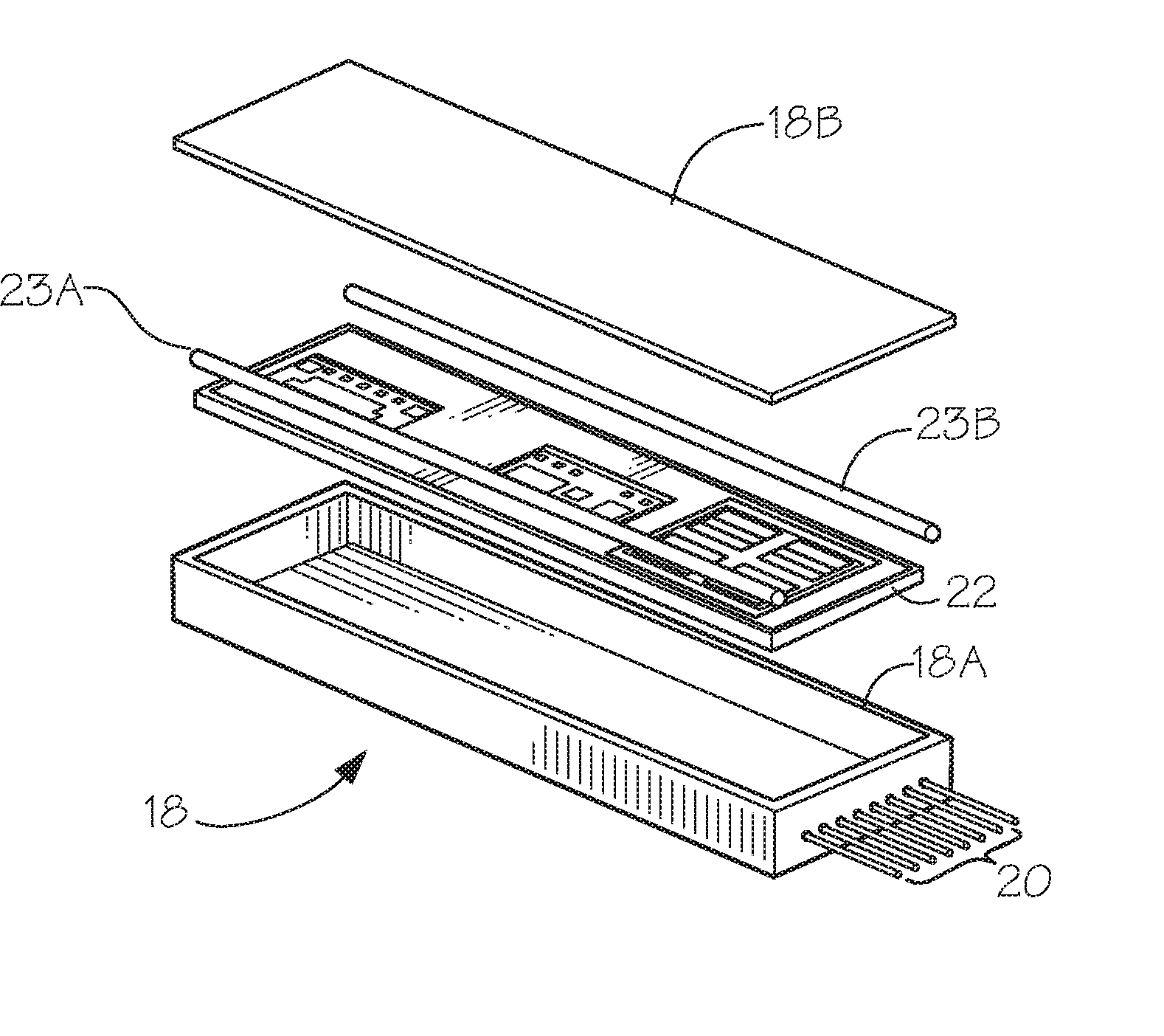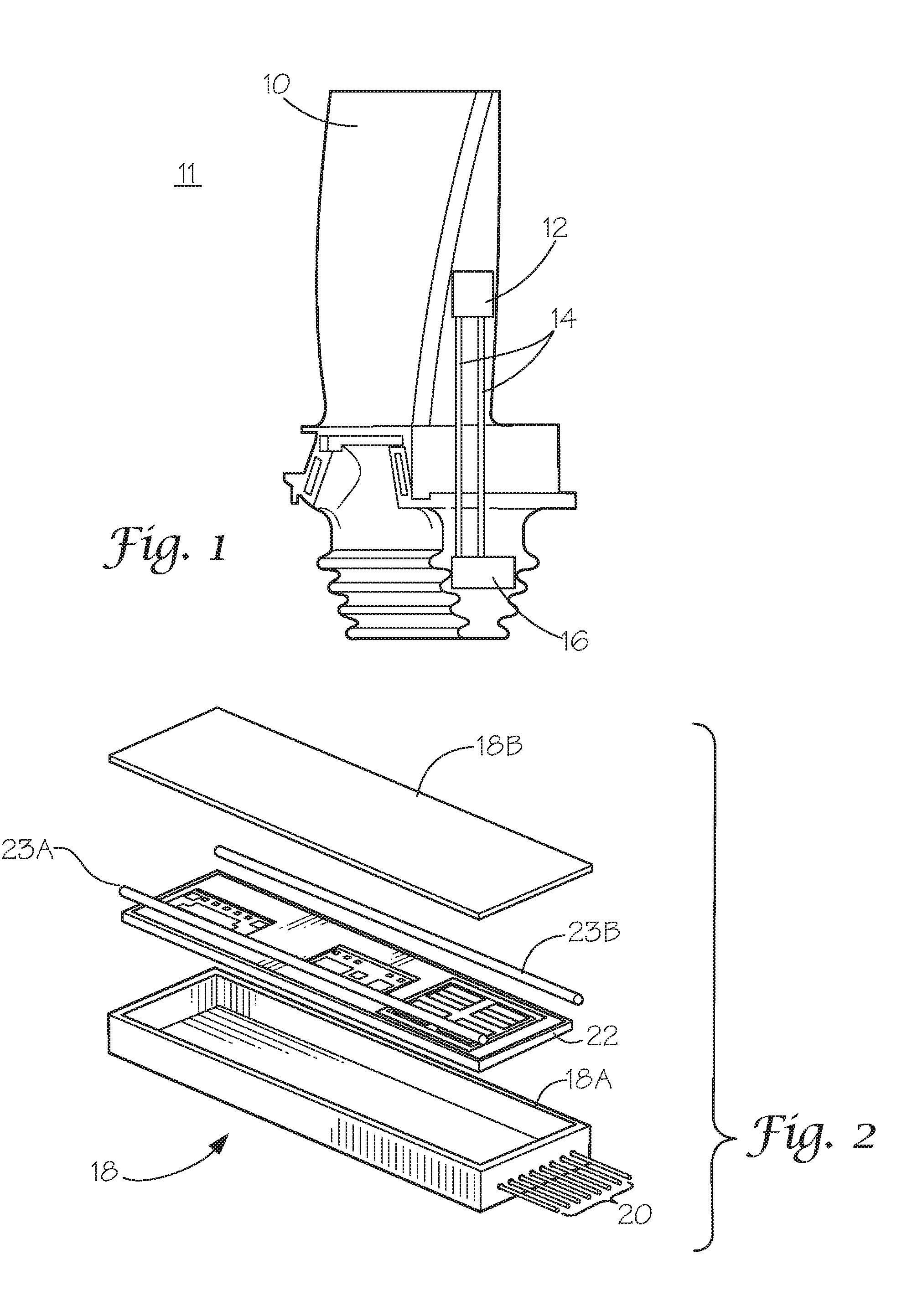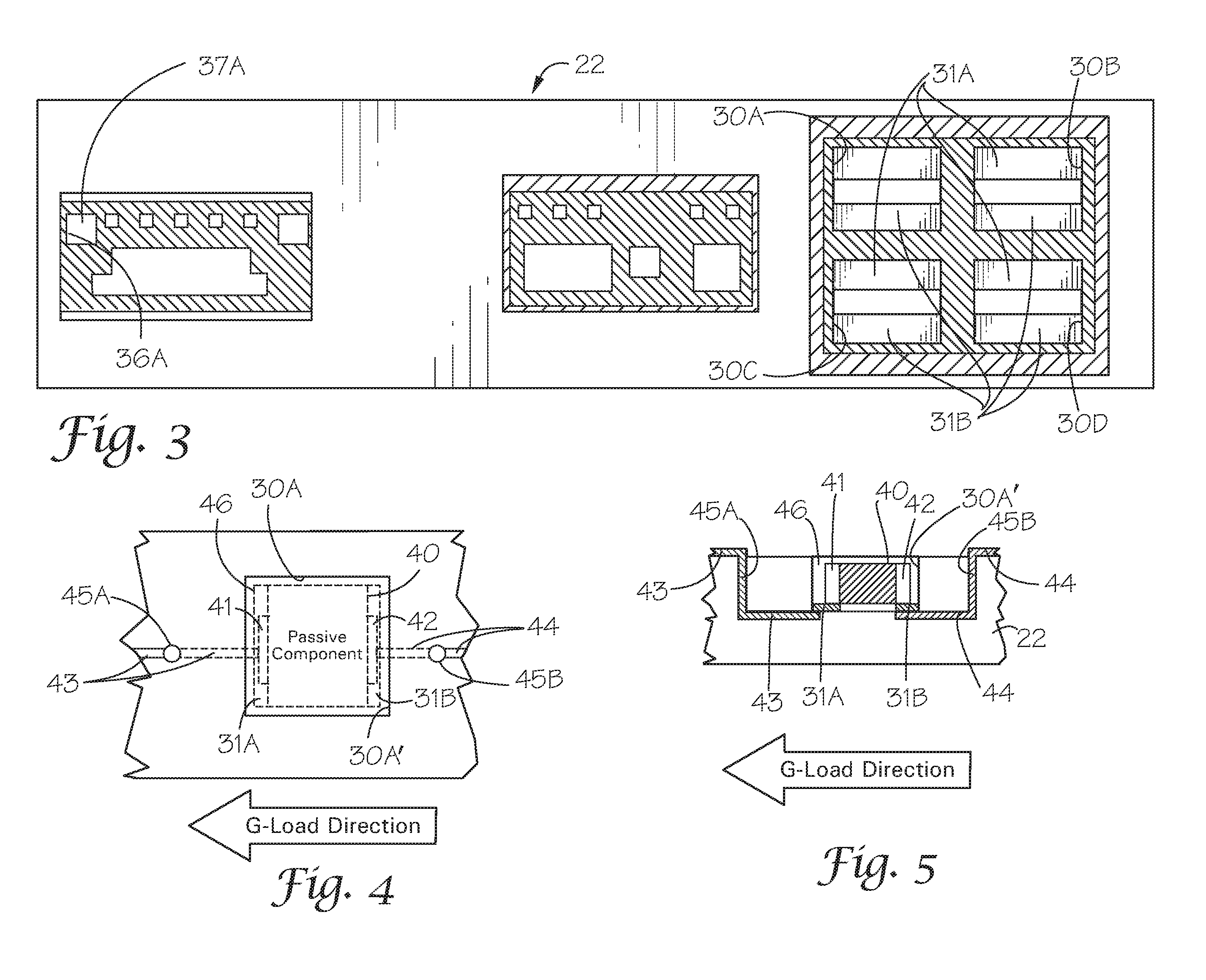Printed Circuit Board for Harsh Environments
a technology of printed circuit boards and harsh environments, which is applied in the manufacture of final products, electrical apparatus construction details, sustainable manufacturing/processing, etc., can solve the problems of not working in the range of thousands of g, the device attached to the circuit board is also stressed, and the high temperature environment of a gas turbine exceeds the temperature capability of polymeric encapsulating materials such as silicon gel or epoxy materials
- Summary
- Abstract
- Description
- Claims
- Application Information
AI Technical Summary
Benefits of technology
Problems solved by technology
Method used
Image
Examples
Embodiment Construction
[0015]The inventors have recognized that the prior art PCB's are inadequate for the harsh environment of a gas turbine, and in particular are inadequate for the high G-forces of a turbine blade to which the PCB is attached. Applicants also have recognized that a better geometry is needed to support circuit components when subjected to extremely high G-forces.
[0016]The components of the circuitry supported by the PCB disclosed herein enable transmission of data via wireless telemetry circuits from regions of a gas turbine with temperatures ranging from ambient to greater than 350° C., and may include temperatures up to at least 450° C. This type of design strategy must be useful for incorporating instrumentation on a rotating hot section component, such as a gas turbine blade being subjected to G-forces in excess of 1,000 G's, because the PCB must be located on the turbine blade, and thus operate at temperatures exceeding 450° C.
[0017]One such instrumented moving hot section componen...
PUM
 Login to View More
Login to View More Abstract
Description
Claims
Application Information
 Login to View More
Login to View More - R&D
- Intellectual Property
- Life Sciences
- Materials
- Tech Scout
- Unparalleled Data Quality
- Higher Quality Content
- 60% Fewer Hallucinations
Browse by: Latest US Patents, China's latest patents, Technical Efficacy Thesaurus, Application Domain, Technology Topic, Popular Technical Reports.
© 2025 PatSnap. All rights reserved.Legal|Privacy policy|Modern Slavery Act Transparency Statement|Sitemap|About US| Contact US: help@patsnap.com



